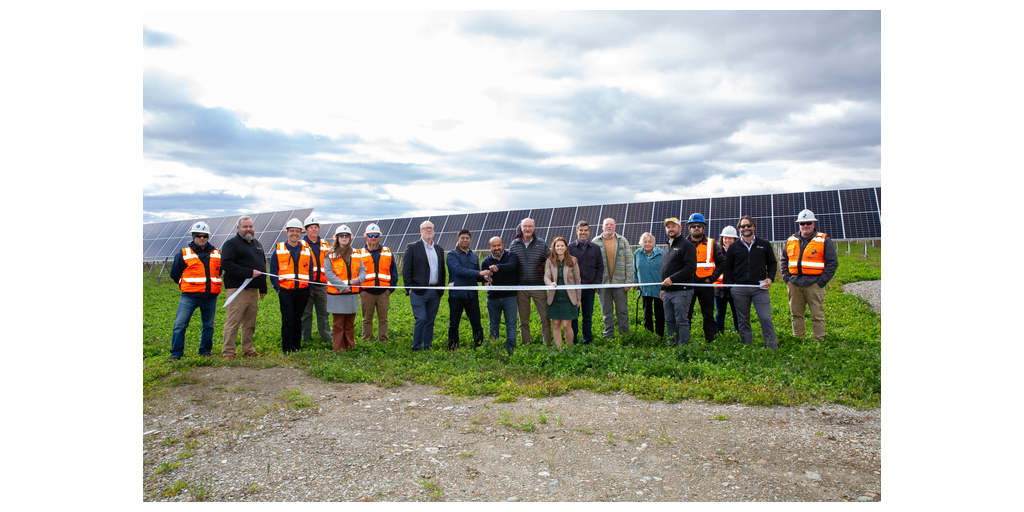Sign up for daily news updates from CleanTechnica on email. Or follow us on Google News!
In this article, I cover Goodyear’s announcements from the CES 2024 show and get some answers on why we can’t yet buy retreads for our cars.
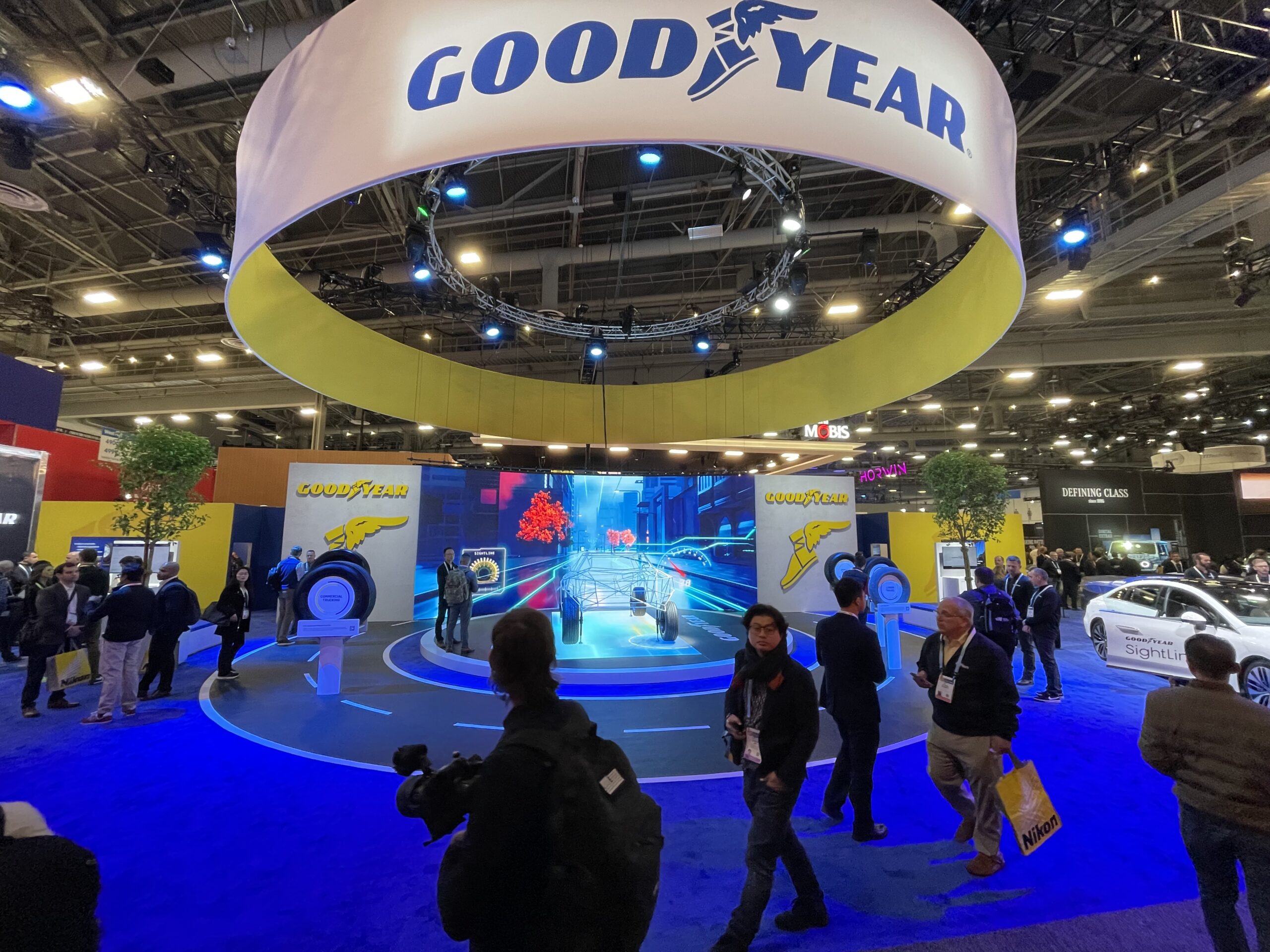
ElectricDrive 2

Goodyear’s ElectricDrive 2 tire is an all-season tire specifically designed for electric vehicles (EVs). It features an asymmetric tread pattern for reliable handling in both wet and dry conditions, as well as SoundComfort Technology to ensure a quieter ride. The tire is made with at least 50% sustainable materials, including soybean oil and rice husk ash silica.
Compared to the previous ElectricDrive tire, the ElectricDrive 2 offers improved rolling resistance, which enhances efficiency and range. It is also designed to provide a longer-lasting tread life to maximize drivers’ EV performance. The tire is available in the US starting in May and comes in 17 sizes to fit popular EV models such as the Tesla Model 3, Tesla Model Y, Tesla Model S, the Ford Mustang Mach-E, and the Chevy Bolt.
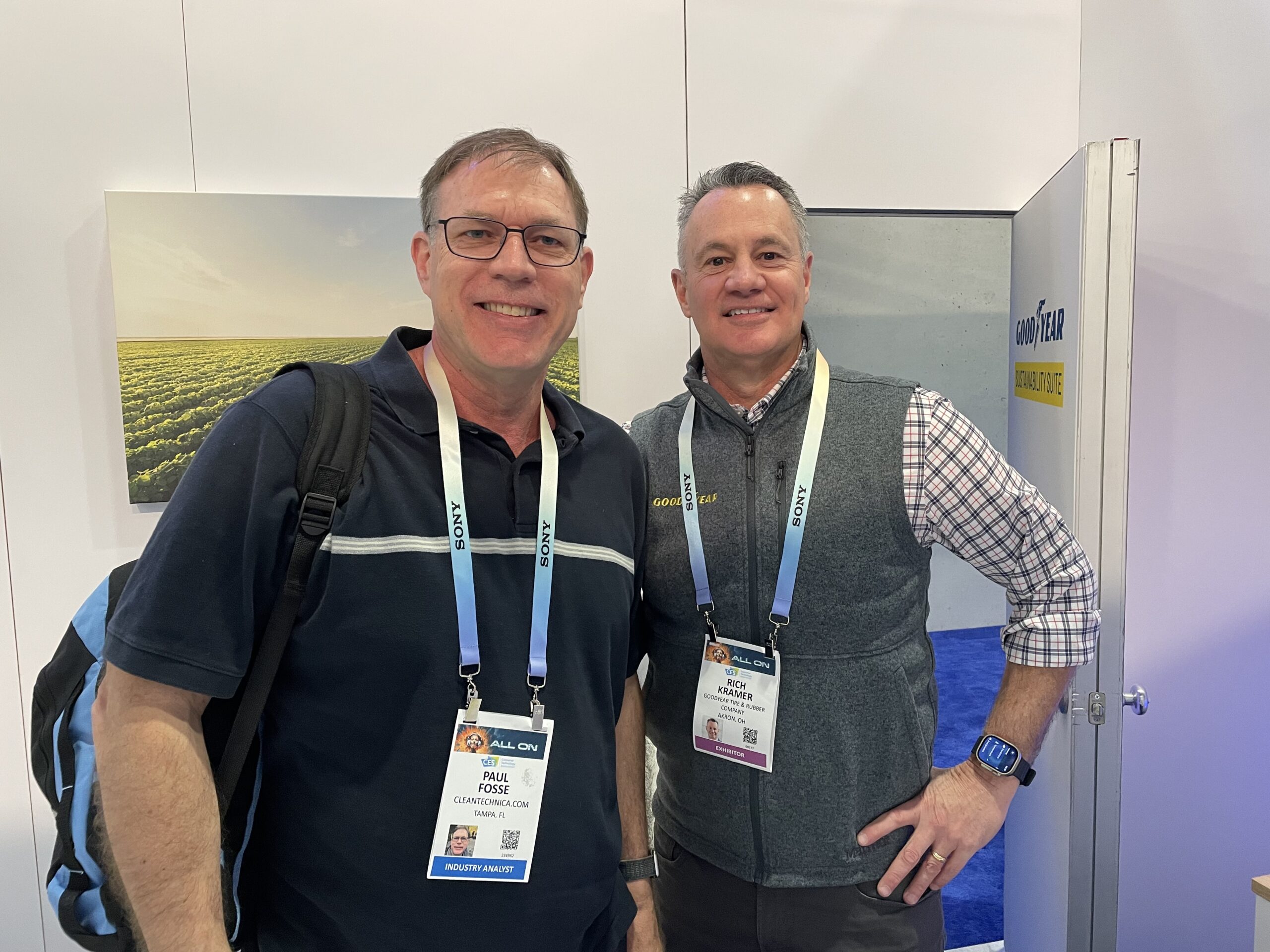
In the interview, I asked the pointed question of what do you give up in going with this tire? Richard described that the tire industry long thought of a triangle of durability, traction, and rolling resistance. It is difficult to improve one of those without impacting the other two attributes. For example, if you want maximum traction for a racing tire, you need to give up some durability and/or rolling resistance. If you want extreme durability, you need to have a hard tire and it would have to give up some traction, especially in winter conditions. For the ElectricDrive 2, Goodyear balanced all 3 really well to give excellent durability and rolling resistance and all-season braking and handling. He did admit that this isn’t a high-performance tire, so if you want the best possible summer traction, they have other tires for that, and for the best winter traction, they have winter tires that remain soft in cold weather.
In summary, the Goodyear ElectricDrive 2 tire is an eco-friendly, high-performance tire tailored for electric vehicles, offering improved efficiency, range, and durability. For more details, see the full announcement here.
Developing Advanced Tire Intelligence Technologies With Goodyear Sightline
I was initially pretty skeptical about integrating ZF tire monitoring sensors with Goodyear Sightline and working with TNO to reduce hydroplaning on wet surfaces when driving on worn tires. First, I’ll summarize the announcements. Then, I’ll describe the simulation that impressed me.
The key quote from the ZF announcement is below:
Through research, virtual simulation and real-world testing, Goodyear and ZF have identified the potential of an integrated solution in improving vehicle performance and safety. Reducing the risk of hydroplaning, the Goodyear SightLine solution is capable of detecting partial hydroplaning early and offers recommendations for optimal speed to enhance vehicle control. Moreover, when heightened hydroplaning severity is detected, equipped with tire intelligence data, the cubiX software is designed to instruct the chassis actuators to apply corrective measures, stabilizing the vehicle.
The key quote from the TNO announcement:
The ABS is an important safety component in modern vehicles designed to help the driver maintain steering control while braking. Through collaborative research and testing on a physical test vehicle, Goodyear and TNO effectively showcased that an improved ABS, equipped with information about the tire type and characteristics such as wear state, can potentially enhance overall system efficiency and reduce braking distance by as much as 5.75 feet.

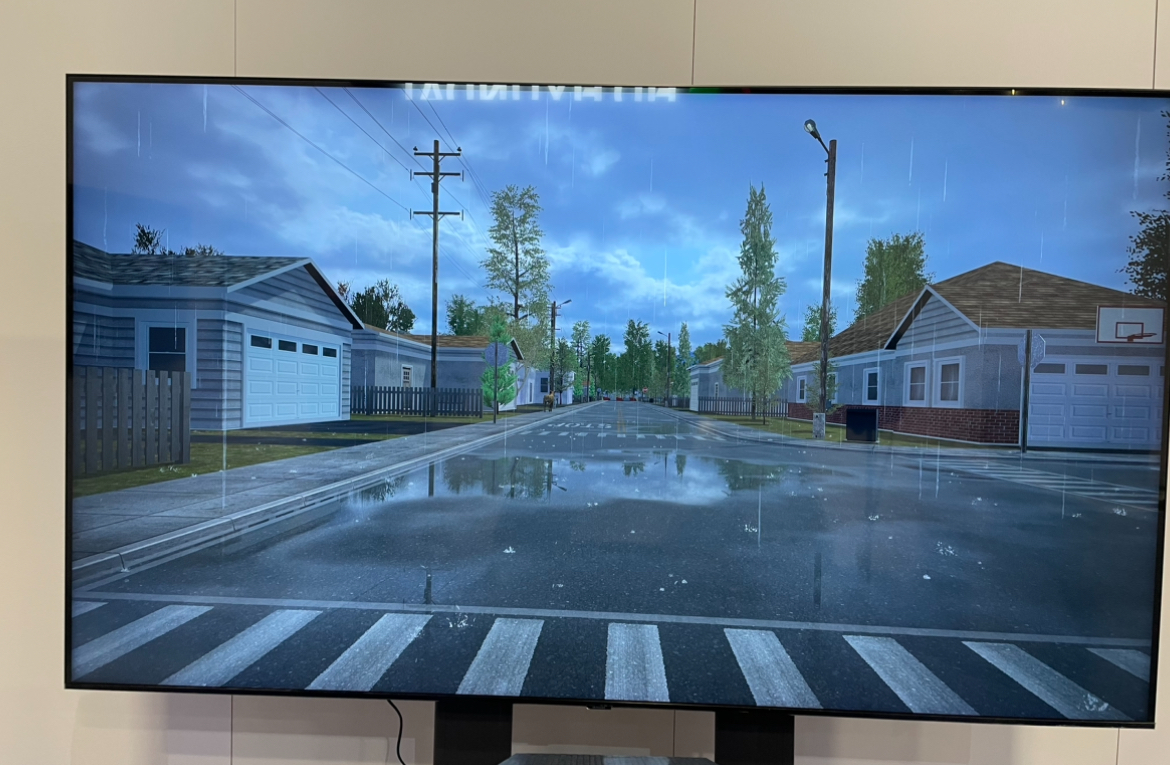
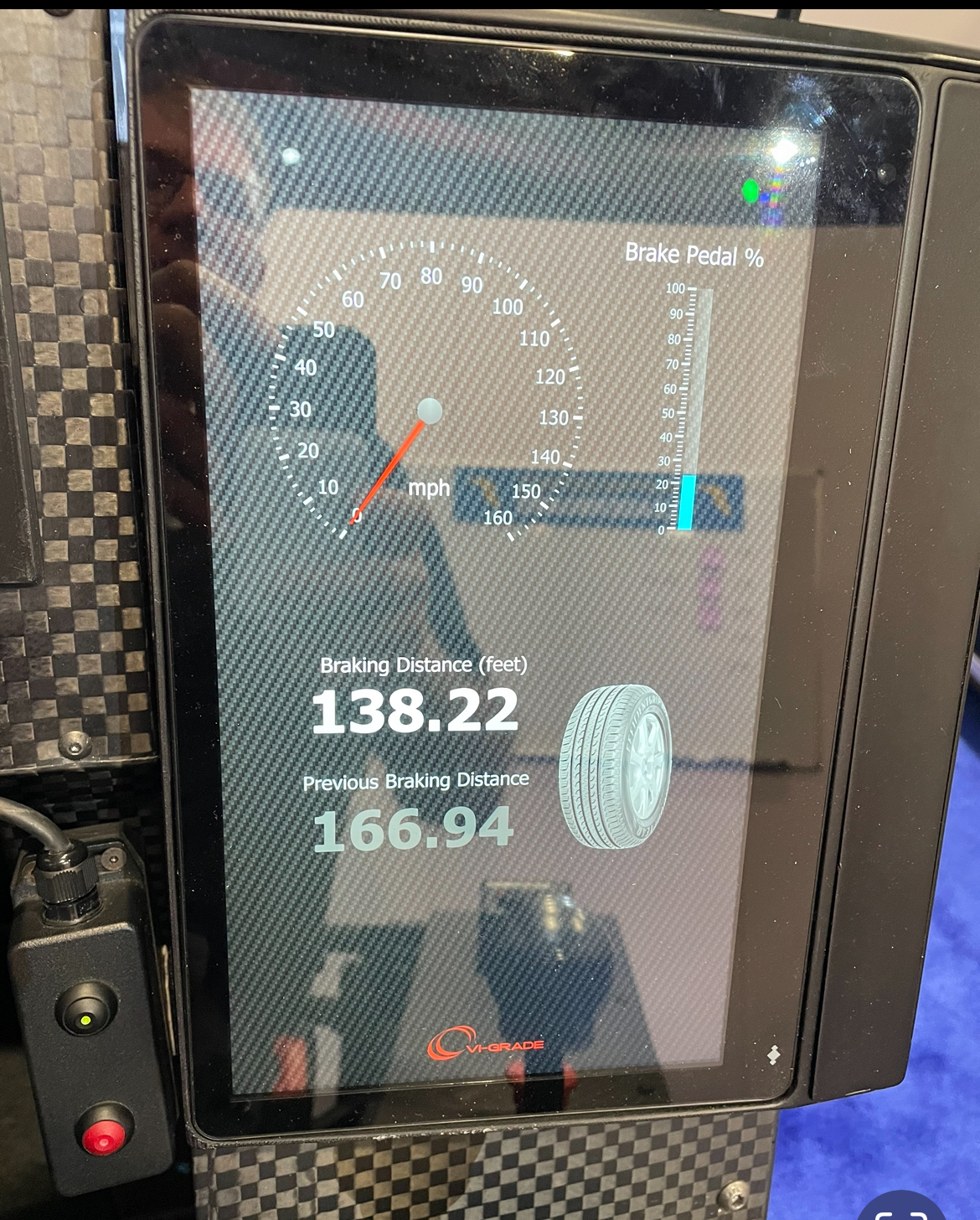
The Ultimate In Reuse & Cost Saving — Retread Tires
I’ve been hearing about retreaded tires since I was an infant, since my father bought me some Bandag stock (I no longer own any). Three years ago, I wrote about reducing tire costs, and when I got an email last week offering me the chance to interview the CEO of Goodyear tire, I jumped at the chance. Although I think that was the last thing he expected to be talking about that morning, he didn’t miss a beat and answered all my questions to my satisfaction. Before I get my questions and his answers, let me give you a bit of context.
When I asked Grok to give me a summary of the market, it did a good job:
Retread tires, also known as remolded or recap tires, are a cost-effective and environmentally friendly alternative to purchasing new tires. The process involves taking a worn-out tire and replacing the worn tread with new tread, allowing the tire to be used again.
Retread tires have a number of benefits, including:
Cost-effective: Retread tires can save you up to 50% of the cost of a new tire, making them a more economical choice for many drivers.
Environmentally friendly: Retreading tires reduces the amount of waste that goes into landfills, as well as the amount of energy and resources needed to produce new tires.
High-quality: Modern retread tires are made using advanced manufacturing techniques and high-quality materials, resulting in a product that is just as safe and reliable as a new tire.Despite these benefits, there are some myths and misconceptions about retread tires. Some people believe that retread tires are not as safe or reliable as new tires, but this is simply not true. Retread tires are subject to the same safety and performance standards as new tires and are just as safe and reliable when properly maintained.
In conclusion, retread tires are a cost-effective and environmentally friendly alternative to new tires. They offer the same safety and performance as new tires and are a great choice for drivers looking to save money and reduce their environmental impact.
Next, I asked Grok why they are used on trucks but not cars and I got some good reasons:
Retreaded tires are commonly used on trucks and other commercial vehicles for several reasons.
Cost-effective: Retreading is a cost-effective way to extend the life of a tire, which is especially important for large commercial fleets that use a high number of tires.
Environmentally friendly: Retreading reduces the number of tires that end up in landfills, helping to conserve resources and reduce waste.
Performance: Modern retread tires are made using advanced manufacturing techniques and high-quality materials, resulting in a product that is just as safe and reliable as a new tire.However, retreaded tires are not commonly used on passenger vehicles for a few reasons.
Safety concerns: Some people believe that retreaded tires are not as safe as new tires, although this is not supported by the evidence.
Lack of awareness: Many people are simply not aware of the benefits of retread tires and may not consider them as an option.
Availability: Retread tires are not as widely available for passenger vehicles as they are for commercial vehicles.In conclusion, retreaded tires are commonly used on trucks and other commercial vehicles because they are cost-effective, environmentally friendly, and perform just as well as new tires. However, they are not as commonly used on passenger vehicles due to safety concerns, lack of awareness, and availability.
With that as background, I asked him about retreads from a manufacturer’s standpoint. I paraphrased his answer below:
- They have a very successful retread program for semi trucks and a somewhat less successful one for trucks.
- They have studied it in depth for the budget consumer market (think 10-year-old Honda Civic) and the issues are:
- Customer perception of quality. Even though quality retreads are as safe as new tires and don’t fall off, people have seen poor quality retreads in the past fall off a semi truck and lay on the side of the road. However, this could be countered with warranty, education, and advertising.
- The semi trucks all use the same size tires, so it is easy to make just a few sizes to cover the entire market. Consumer cars and trucks use hundreds of tire sizes, so the volume of each of those sizes is too low to manage the process economically.
- Dealers have found buyers for used and worn tires today, so they will have to compete for the old tires and not just get them for free.
- Because of that, they would only be a bit cheaper than new tires, and with the perception of poor quality (not accurate), they wouldn’t sell well at a small discount to new.
- That being said, a large fleet that had a standard size (like Hertz or Uber that has many Teslas, even after the recent news they are cutting back) could save a lot of money by putting retreads on their vehicles.
- If Tesla (like with the Model Y or Model 2 or robotaxi) or others, like BYD, sell millions of vehicles with the same tire size, that might allow them to offer retreads in sizes that have millions of sales.
- If there were less proliferation of sizes and types of tires, the whole industry would develop a marketplace for the worn tires to support retreading and greatly improve the sustainability and cost of replacement tires.
Conclusion
It was great to hear about the new ElectricDrive 2 tire. I mentioned that today, it is sufficient to have a general EV tire, but in the future, they will need an EV high performance, EV budget, EV long life, and EV winter tire. He agreed. As the market develops, they will continue to release products to meet emerging needs. The simulator really showed me the value of the sensors and software that Goodyear announced at the show. It will be interesting to see where they are adopted. I learned a lot about retreads and I will be looking to see if this develops first for the fleet market and later for the consumer market if Tesla and others are successful at selling more vehicles with the same size and type of tires than the market does today.
Disclosure: I am a shareholder in Tesla [TSLA], BYD [BYDDY], Nio [NIO], XPeng [XPEV], Hertz [HTZ], NextEra Energy [NEP], and several ARK ETFs. But I offer no investment advice of any sort here.
All images by Paul Fosse, except as noted otherwise
Have a tip for CleanTechnica? Want to advertise? Want to suggest a guest for our CleanTech Talk podcast? Contact us here.
Our Latest EVObsession Video
I don’t like paywalls. You don’t like paywalls. Who likes paywalls? Here at CleanTechnica, we implemented a limited paywall for a while, but it always felt wrong — and it was always tough to decide what we should put behind there. In theory, your most exclusive and best content goes behind a paywall. But then fewer people read it!! So, we’ve decided to completely nix paywalls here at CleanTechnica. But…
Thank you!
CleanTechnica uses affiliate links. See our policy here.

